 By keeping the needs of all users in mind, All Persons Trail can be created that are accessible and enjoyable for everyone. By providing these accessible facilities and amenities, all users can have an enjoyable and safe experience while visiting the trail or outdoor area.
By keeping the needs of all users in mind, All Persons Trail can be created that are accessible and enjoyable for everyone. By providing these accessible facilities and amenities, all users can have an enjoyable and safe experience while visiting the trail or outdoor area.
Jump to section
1. Washrooms
- Washroom facilities along trails are often inaccessible in part due to the surroundings and in part due to the washroom itself. Ensure that all aspects of a washroom experience are meaningfully accessible. This means considering the entire experience: the connecting pathways, approach, entrance, doors/handles, stalls, signage, lighting, sink area and all other washroom elements.
- Ensure that someone with lived experience is engaged in the design of your washroom facility.
- It must be accessed using an accessible path.
- The landing or entrance at the door should be level.
- Consider easy access through doorless entries or automatic doorways. If that is not possible, consider a push button.
- Add grab bars to the interior of washrooms.
- Ensure that the style and location of services such as hand sanitizer and hand washing stations exceed accessibility standards.
- Add clear signage, including braille, and ensure the text, graphics and location meet accessibility standards.
- Add communication information for users in distress.
- Consider winterizing washroom facilities to make your trail accessible year-round.

This accessible outhouse in situated in Tuktoyaktuk, Northwest Territories, which is Trans Canada Trail’s Point Zero North.
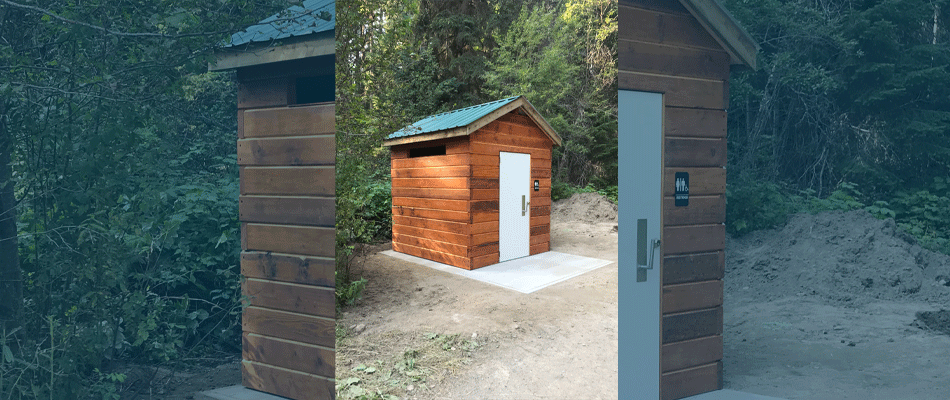
This accessible outhouse was installed at the Pidherny trailhead in Prince George, British Columbia. Photo credit: Janis Neufeld
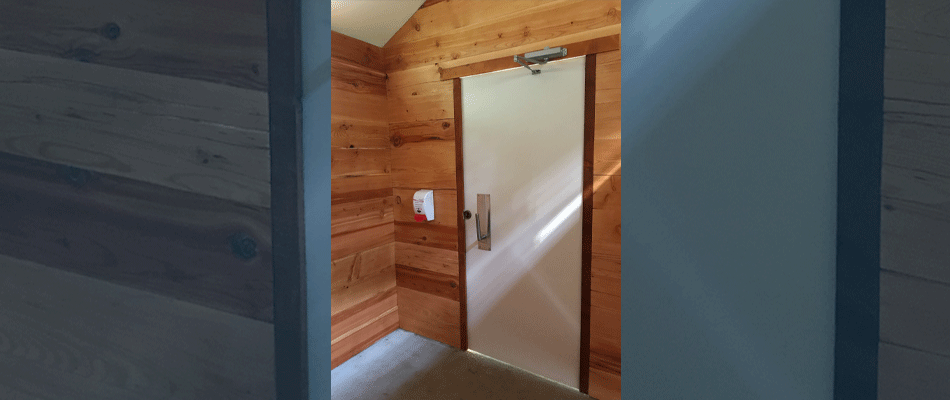
This accessible outhouse was installed with a lever handle and a separate deadbolt. Photo credit: Janis Neufeld
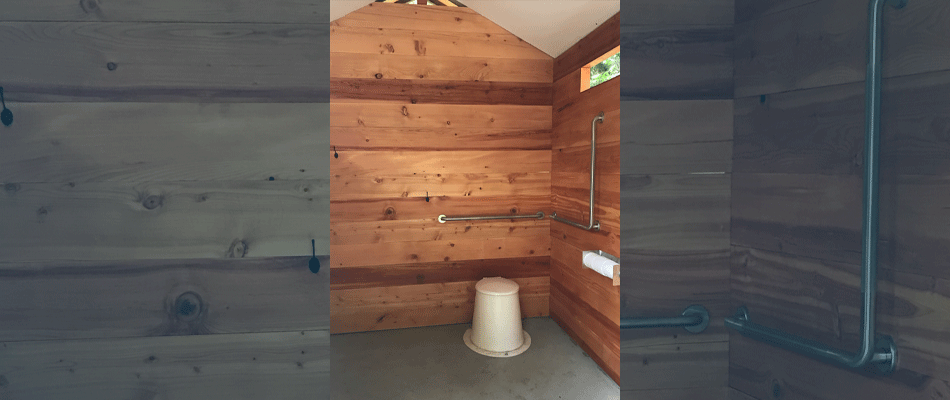
The interior of the outhouse has multiple grab bars and space for a wheelchair. Photo credit: Janis Neufeld
2. PICNIC AND REST AREAS
- Provide a variety of seating styles: for example, with and without armrests and backrests. This makes your trail more accessible to people with a variety of needs.
- Ensure that seating is clearly off the path of travel with a level and firm surface leading to the seating area.
- Be sure to install accessible picnic tables with either a section of bench removed or with an extension at the end of the table. There are several versions available.
- Include a space next to benches so trail users with wheelchairs, companions and service animals can rest safely off the trail.
- Consider space for service animals.
- For visibility, try to contrast the colour of the bench from its surroundings.
- Ensure water fountains are available at different heights and consider hands-free operation.
- If possible, include shade protection at your rest area.
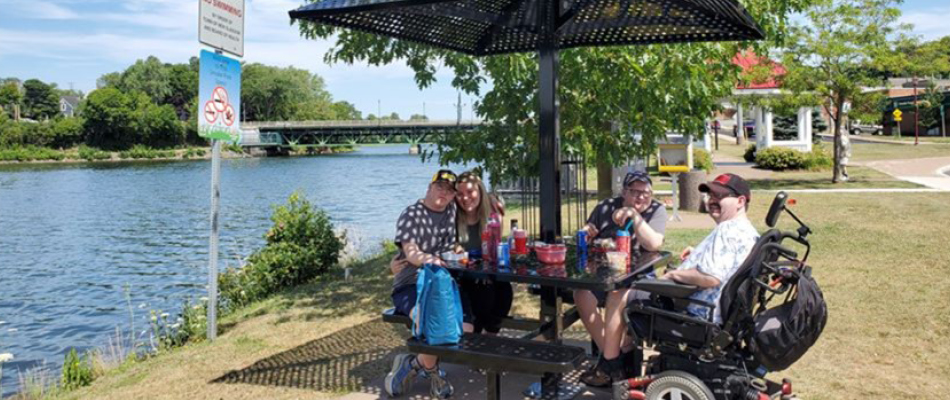
The trail in New Glasgow, Nova Scotia, offers accessible seating off the trail, along with shade protection.
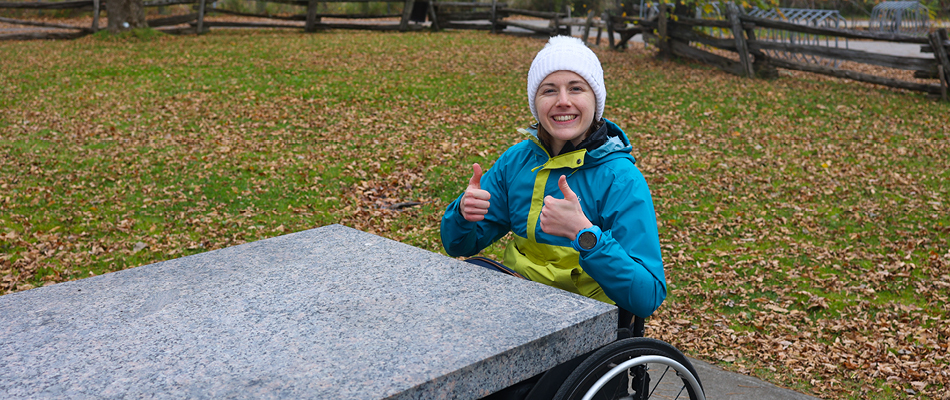
This picnic table along Le Corridor du Littoral, Quebec City, offers plenty of room for any trail user.
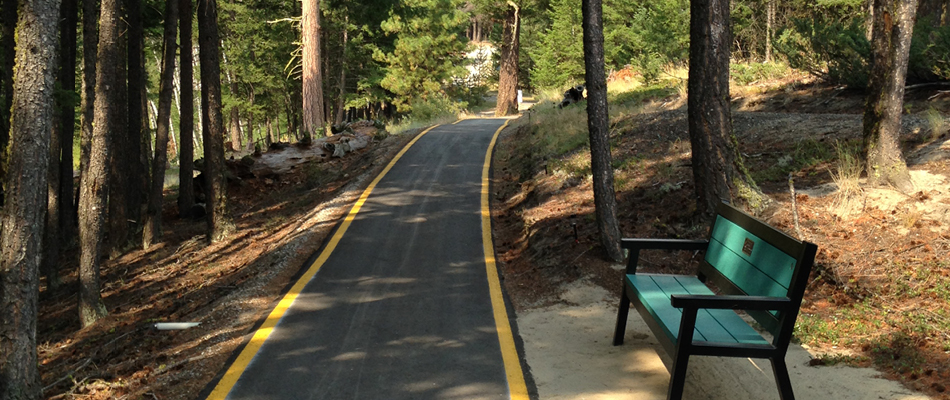
The benches along the trail at Agur Lake Camp in British Columbia are off the trail yet clearly visible in their environment. There is also space next to the bench for a wheelchair and/or service animals.
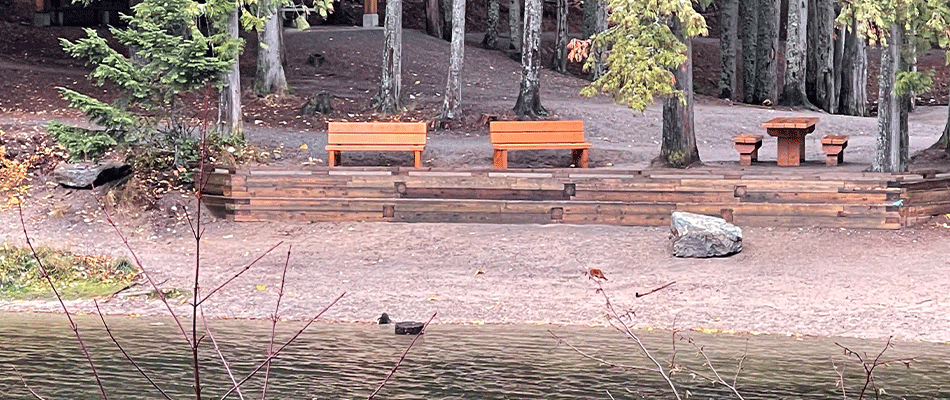
Accessible benches and picnic tables have been installed in Cottonwood Lake Regional Park. Photo credit: Janis Neufeld





